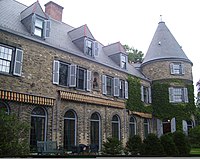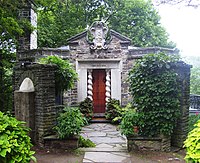
Pike County is a county in the Commonwealth of Pennsylvania. It is part of Northeastern Pennsylvania. As of the 2020 census, the population was 58,535. Its county seat is Milford.
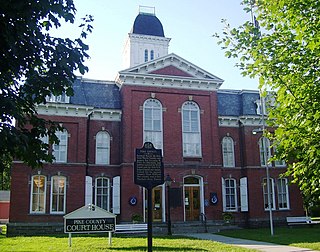
Milford is a borough that is located in Pike County, Pennsylvania, United States, and the county seat. Its population was 1,103 at the time of the 2020 census.

Gifford Pinchot was an American forester and politician. He served as the fourth chief of the U.S. Division of Forestry, as the first head of the United States Forest Service, and as the 28th governor of Pennsylvania. He was a member of the Republican Party for most of his life, though he joined the Progressive Party for a brief period.
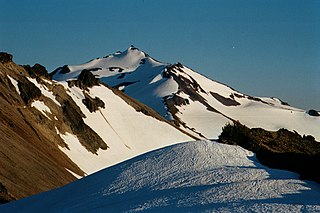
Gifford Pinchot National Forest is a National Forest located in southern Washington, managed by the United States Forest Service. With an area of 1.32 million acres (5300 km2), it extends 116 km (72 mi) along the western slopes of Cascade Range from Mount Rainier National Park to the Columbia River. The forest straddles the crest of the South Cascades of Washington State, spread out over broad, old growth forests, high mountain meadows, several glaciers, and numerous volcanic peaks. The forest's highest point is at 12,276 ft (3,742 m) at the top of Mount Adams, the second tallest volcano in the state after Rainier. Often found abbreviated GPNF on maps and in texts, it includes the 110,000-acre (450 km2) Mount St. Helens National Volcanic Monument, established by Congress in 1982.

Biltmore Estate is a historic house museum and tourist attraction in Asheville, North Carolina. Biltmore House, the main residence, is a Châteauesque-style mansion built for George Washington Vanderbilt II between 1889 and 1895 and is the largest privately owned house in the United States, at 178,926 sq ft (16,622.8 m2) of floor space and 135,280 sq ft (12,568 m2) of living area. Still owned by George Vanderbilt's descendants, it remains one of the most prominent examples of Gilded Age mansions.
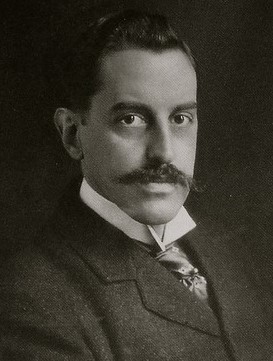
George Washington Vanderbilt II was an American art collector and member of the prominent Vanderbilt family, which amassed a huge fortune through steamboats, railroads, and various business enterprises. He commissioned the construction of a 250-room mansion, the largest privately owned home in the United States, which he named Biltmore Estate.

The Transfer Act of 1905 transferred the forest reserves of the United States from the Department of the Interior, United States General Land Office to the Department of Agriculture, Bureau of Forestry.

Yale School of the Environment (YSE) is a professional school of Yale University. It was founded to train foresters, and now trains environmental students through four 2-year degree programs, two 10-month mid-career programs, and a 5-year PhD program. Still offering forestry instruction, the school has the oldest graduate forestry program in the United States.
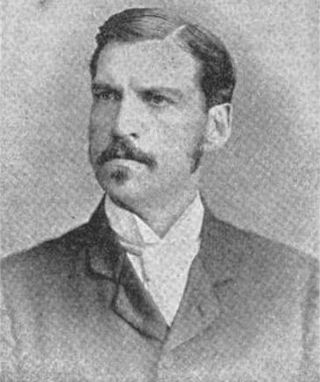
Lloyd Stephens Bryce was an American diplomat and politician who served one term as a U.S. Representative from New York from 1887 to 1889. He was also an author and magazine editor.

The Charles Gates Dawes House is a historic house museum at 225 Greenwood Street in Evanston, Illinois. Built in 1894, this Chateauesque lakefront mansion was from 1909 until his death the home of Charles Gates Dawes (1865–1951) and his family. Dawes earned the 1925 Nobel Peace Prize for his plan to alleviate the crushing burden of war reparations Germany was required to pay after World War I. Dawes served as U.S. Vice President under Calvin Coolidge, a general during World War I, and as United States Ambassador to Great Britain. Dawes was a descendant of William Dawes, who along with Paul Revere, rode to alarm the colonists that the British regulars were coming on the night before the Revolutionary War began. The house, a National Historic Landmark, is now owned by the Evanston History Center, which offers tours.

Richard Howland Hunt was an American architect and member of the Hunt family of Vermont who worked with his brother Joseph Howland Hunt in New York City at Hunt & Hunt.

Rose Standish Nichols (1872–1960) was an American landscape architect from Boston, Massachusetts. Nichols worked for some 70 clients in the United States and abroad. Collaborators included David Adler, Mac Griswold, Howard Van Doren Shaw, and others. She also wrote articles about gardens for popular magazines such as House Beautiful and House & Garden, and published three books about European gardens.
The Pinchot Institute for Conservation is a conservation organization based in Washington, DC. It is named after Gifford Pinchot, the founding Chief of the United States Forest Service and two-time Pennsylvania Governor. The Pinchot Institute for Conservation works for sustainable environment, clean water, clean air and healthy habitat through conservation thought, policy and action.

Forester's Hall, also known as Forest Hall, is a historic commercial building located at Milford, Pike County, Pennsylvania. The original section was built in 1886, and expanded in 1904. It is a large three-story, eight-bay wide building constructed of bluestone. It features a steep pointed roof, small towers, gables, dormers, and three bluestone chimneys in a Châteauesque style.
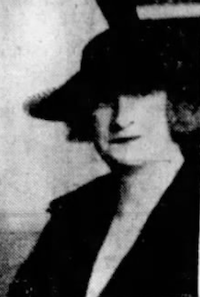
Edith Claire Cram was an American peace activist and heiress. She founded Peace House, which produced anti-war and peace movement lectures, newspaper advertisements, and other propaganda to promote peace. She was a benefactor for the War Resisters League.
Ruth Pickering Pinchot was an American writer, critic, and activist.

Gifford Pinchot State Park is a 2,338-acre (946 ha) Pennsylvania state park in northern York County, Pennsylvania, in the United States.

Cornelia Elizabeth Bryce Pinchot, also known as “Leila Pinchot,” was a 20th-century American conservationist, Progressive politician, and women’s rights activist. She was the wife of Gifford Pinchot (1865-1946), the renowned conservationist and two-time Governor of the Commonwealth of Pennsylvania, and was also a close friend of U.S. President Theodore Roosevelt. She was the maternal great-granddaughter of Peter Cooper, founder of Cooper Union, and daughter of U.S. Congressman and Envoy Lloyd Stephens Bryce (1851–1917). She played a key role in the improvement of Grey Towers, the Pinchot family estate in Milford, Pennsylvania, which was donated to the U.S. Forest Service in 1963 and then designated as a National Historic Landmark in 1966

H. Edwards Ficken (1852-1929) was an English American architect in practice in New York City.
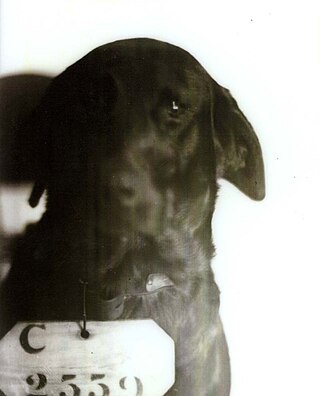
Pep was a black Labrador Retriever who was falsely accused of murdering a cat. He belonged to Pennsylvania governor Gifford Pinchot and was sent to live alongside the inmates of the Eastern State Penitentiary in August 1924. Pep was given inmate number C-2559 and had both his mugshot and pawprints taken. While he was logged into the prison ledger as having received a life sentence for murder, in reality he was given to the prison by Pinchot to boost the morale of the inmates.




